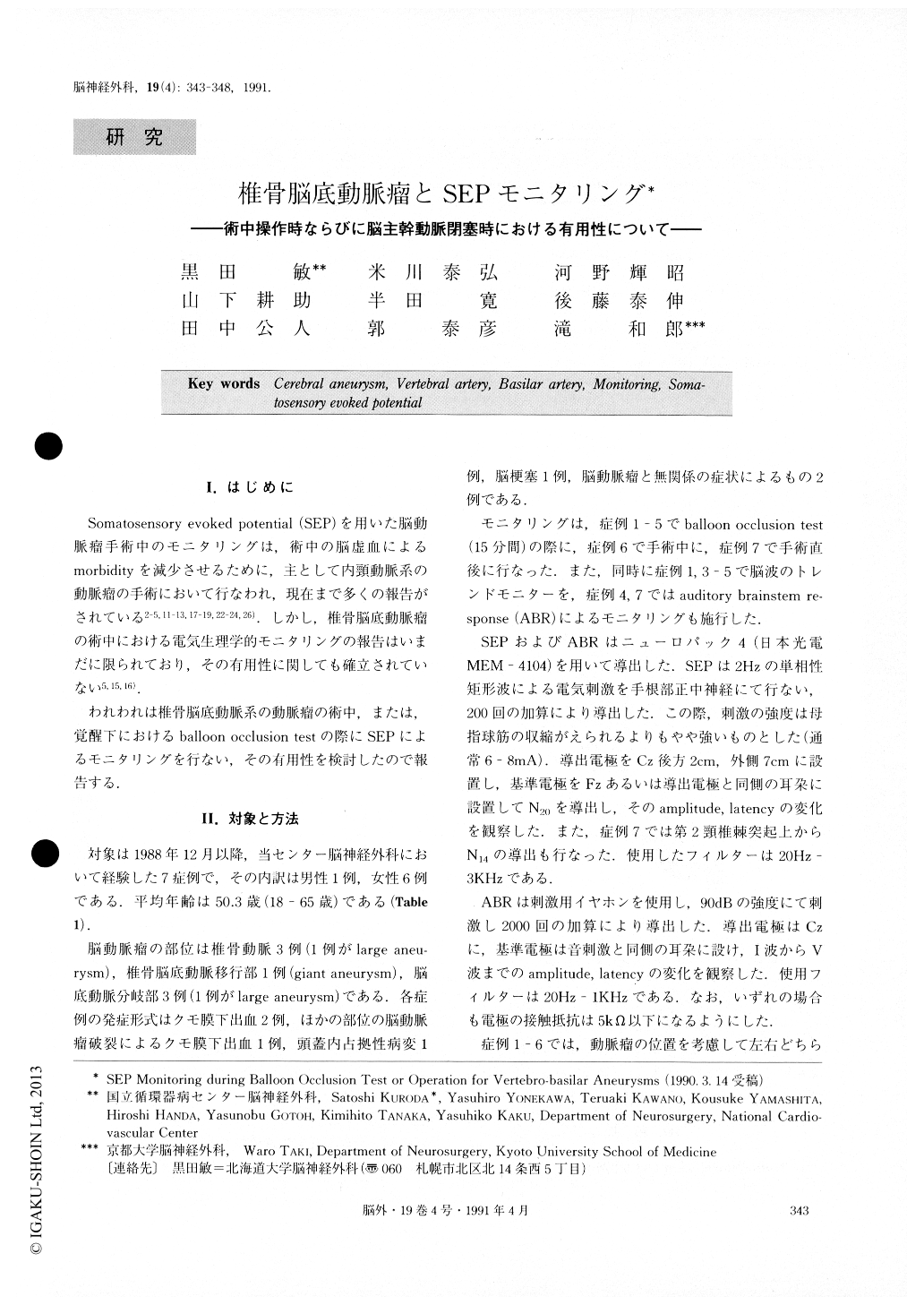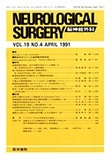Japanese
English
- 有料閲覧
- Abstract 文献概要
- 1ページ目 Look Inside
I.はじめに
Somatosensory evoked potential(SEP)を用いた脳動脈瘤手術中のモニタリングは,術中の脳虚血によるmorbidityを減少させるために,主として内頸動脈系の動脈瘤の手術において行なわれ,現在まで多くの報告がされている2-5,11-13,17-19,22-24,26).しかし,椎骨脳底動脈瘤の術中における電気生理学的モニタリングの報告はいまだに限られており,その有用性に関しても確立されていない5,15,16).
われわれは椎骨脳底動脈系の動脈瘤の術中,または,覚醒下におけるballoon occlusion testの際にSEPによるモニタリングを行ない,その有用性を検討したので報告する.
Abstract
SEP (somatosensory evoked potential) monitoring was carried out on seven patients with vertebro-basilar aneurysms during balloon occlusion test, during opera-tion, or after operation. In the patient (case 5) withbasilar tip aneurysm, the amplitude of N20 remarkably decreased and this finding closely correlated with dis-turbed consciousness during transient balloon occlusion of the basilar artery. In another patient (case 6) with verterbral dissecting aneurysm, cerebellar retraction caused transient prolongation of N20 latency during op-eration. In another case, postoperative SEP monitoring revealed marked reduction of N20 amplitude in the pa-tient (case 7) who showed disturbed consciousness and bilateral oculomotor palsy after operation for basilar aneurysms, but who showed no abnormality in postop-erative ABR (auditory evoked brainstem response). The other four patients showed no neurological deterio-ration and no SEP change during transient balloon occlusion of the parent arteries.
Because of the high rate of “false-negative” findings, it remains unclear whether SEP monitoring during surgery for vertebrobasilar aneurysms is of value to predict postoperative deficit due to brainstem ischemia. In our study, however, the changes of SEP were well correlated with neurological deterioration and / or the location of postoperative infarction.
In conclusion, SEP monitoring during balloon occlu-sion tests or operations for vertebro-basilar aneurysms is considered to be useful in predicting ischemic compli-cation of the brainstem caused by the occlusion of the parent artery. However other methodologies have to be developed in order to monitor the pyramidal tract and reticular activating system of the brainstem more accu-rately.

Copyright © 1991, Igaku-Shoin Ltd. All rights reserved.


